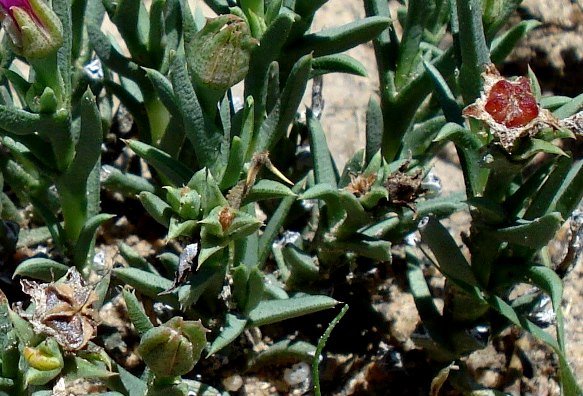Ruschia calcarea buds and fruit

Author: Ivan Lätti
Photographer: Judd Kirkel Welwitch
The fleshy buds of Ruschia calcarea have five unequal sepals folding in over the developing corolla and flower innards. The thick, green, finger-like sepals taper to distinct mucro-tips. Sepals are free to where they join the inferior ovary.
The sepals sometimes interfere with the spreading of petals in open flowers, dividing them into separate groups that deviate from the common mesemb feature of continuous petal whorls.
In the red-topped, translucent young fruit in picture the dry, beige sepal tips spread in haggard star-shape around the central dome. The dry fruit on the left has lost most sepal parts, now redundant and disintegrated, while the five-loculed fruit itself is dry and hard.
Some sepal and leaf surfaces show dots on their yellow-green and blue-green surfaces respectively (Smith, et al, 1998; Herre, 1971; iNaturalist).

